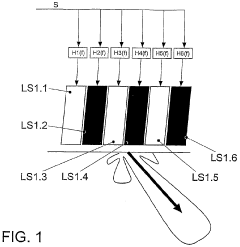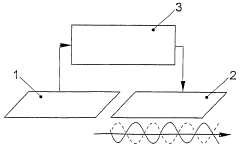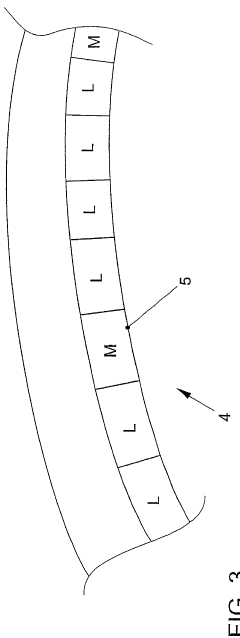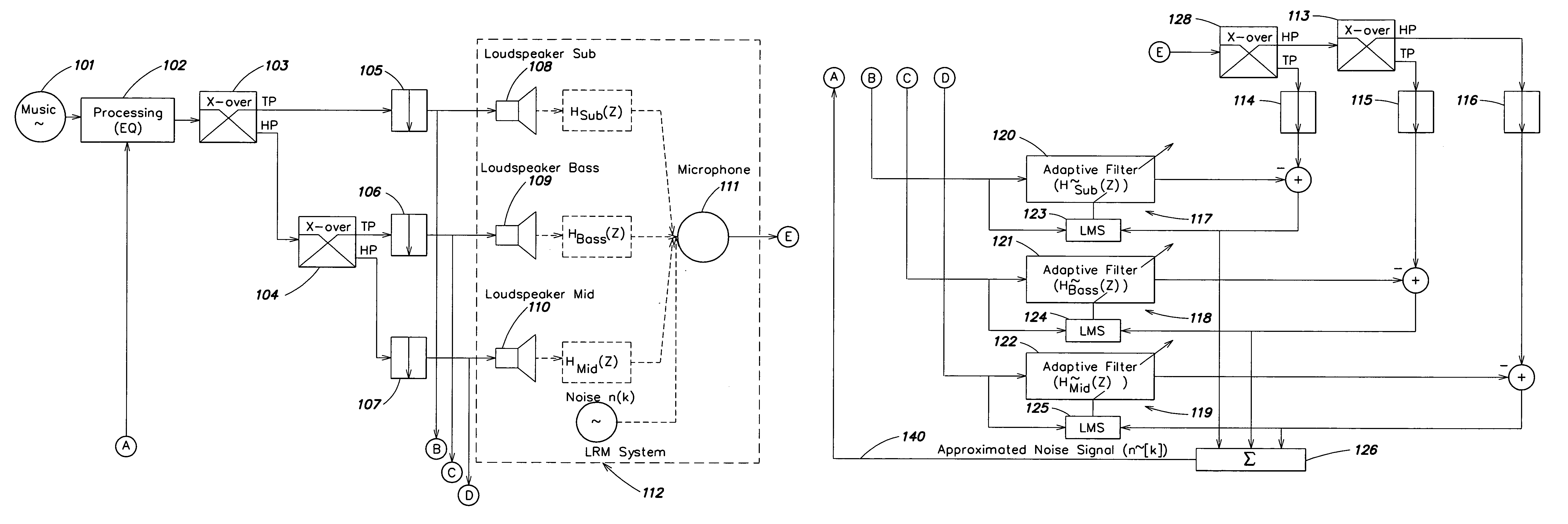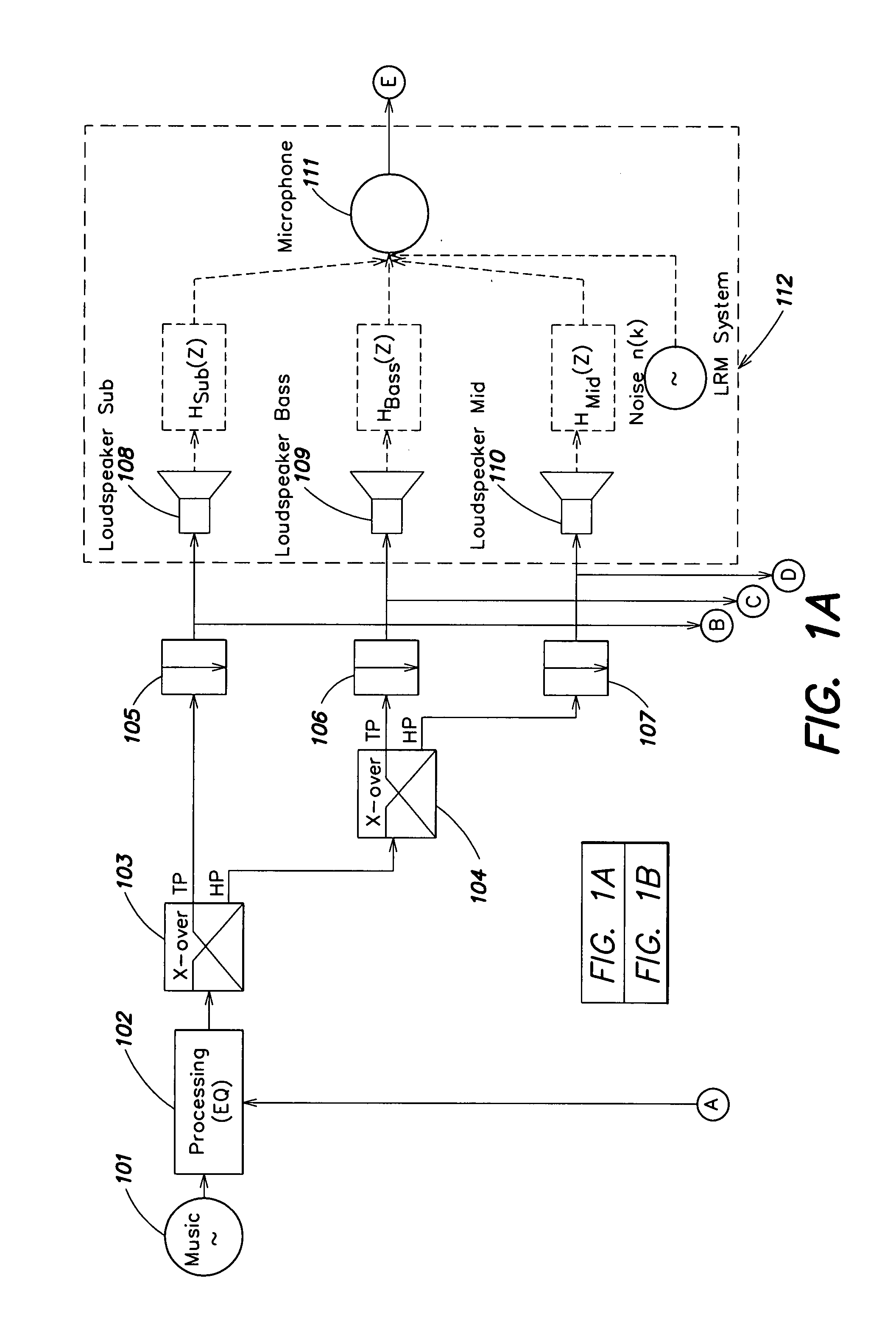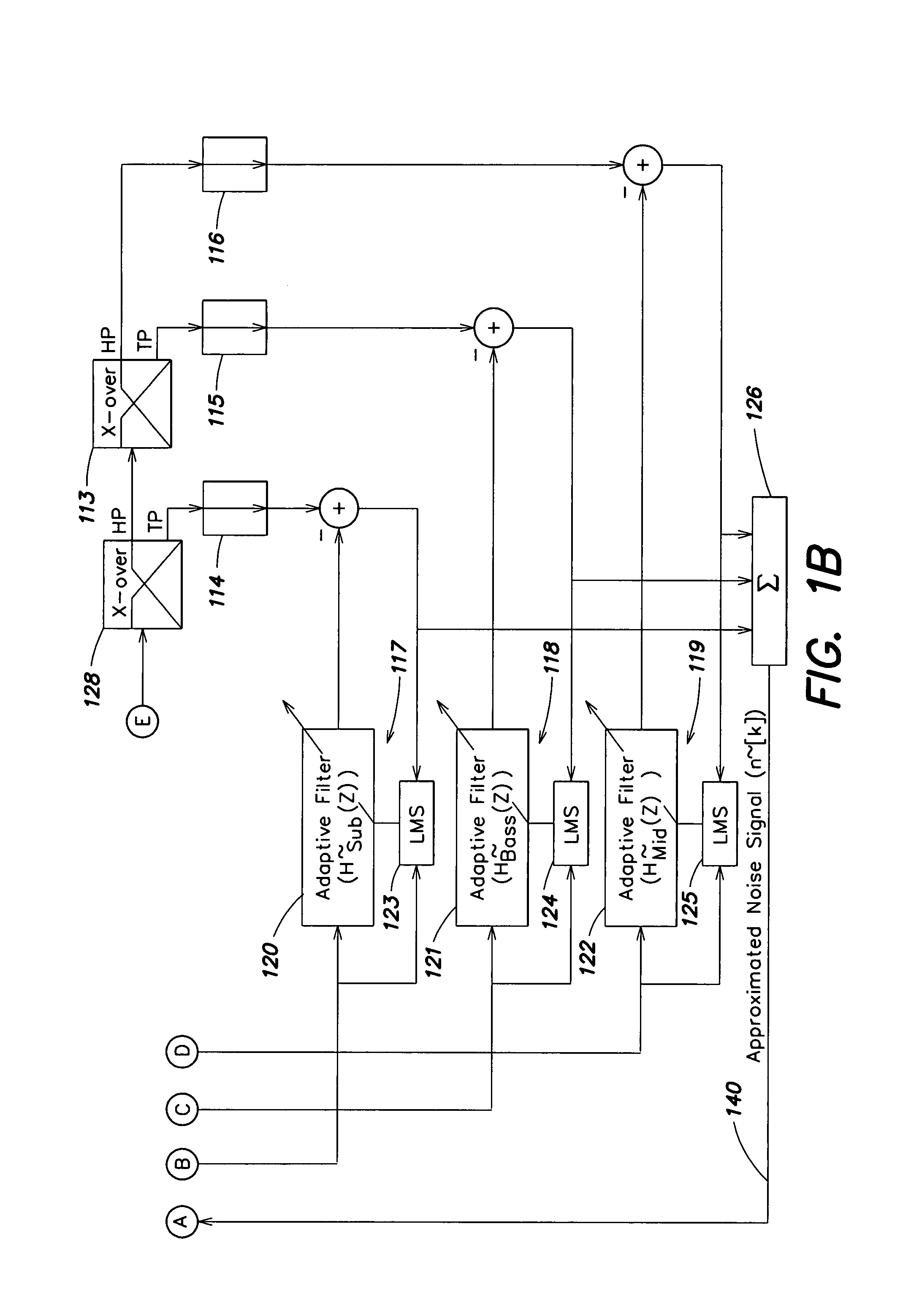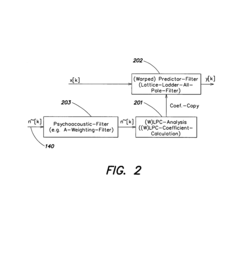LDAC and its Applications in Automotive Audio
JUL 4, 20258 MIN READ
Generate Your Research Report Instantly with AI Agent
Patsnap Eureka helps you evaluate technical feasibility & market potential.
LDAC Technology Evolution
LDAC, developed by Sony in 2015, has undergone significant evolution since its inception. Initially designed for high-quality wireless audio transmission, LDAC has continuously improved to meet the growing demands of the automotive audio industry.
In its early stages, LDAC focused on achieving high-resolution audio transmission over Bluetooth connections. The technology utilized adaptive bit rate to optimize audio quality based on wireless conditions, supporting up to 990 kbps data transfer rates. This marked a substantial improvement over standard Bluetooth codecs, offering near-lossless audio quality.
As automotive infotainment systems became more sophisticated, LDAC adapted to address the unique challenges of in-vehicle audio environments. The technology evolved to handle multiple audio streams simultaneously, catering to multi-zone audio systems in luxury vehicles. This development allowed for independent high-quality audio experiences for different passengers within the same vehicle.
LDAC's evolution also saw improvements in latency reduction, a critical factor for automotive applications. Enhanced algorithms and processing techniques were implemented to minimize delay between audio transmission and playback, ensuring seamless integration with other vehicle systems and improving the overall user experience.
The codec's efficiency in power consumption has been another area of continuous improvement. As electric vehicles gained prominence, LDAC optimized its encoding and decoding processes to reduce energy usage without compromising audio quality. This evolution made LDAC more attractive for integration into energy-conscious automotive designs.
Recent advancements in LDAC technology have focused on compatibility with emerging wireless standards, such as Bluetooth LE Audio. This adaptation ensures that LDAC remains relevant in the rapidly evolving landscape of automotive connectivity, supporting newer, more efficient wireless protocols while maintaining its high-quality audio capabilities.
The technology has also evolved to support a wider range of audio formats and sampling rates, accommodating the diverse audio content available in modern vehicles. This flexibility allows LDAC to handle everything from compressed streaming audio to high-resolution studio-quality recordings, enhancing its versatility in automotive applications.
As vehicle autonomy advances, LDAC has begun to evolve towards supporting immersive audio experiences. The technology is being adapted to work with spatial audio formats, preparing for a future where passengers may engage with more complex, multi-dimensional soundscapes within autonomous vehicles.
In its early stages, LDAC focused on achieving high-resolution audio transmission over Bluetooth connections. The technology utilized adaptive bit rate to optimize audio quality based on wireless conditions, supporting up to 990 kbps data transfer rates. This marked a substantial improvement over standard Bluetooth codecs, offering near-lossless audio quality.
As automotive infotainment systems became more sophisticated, LDAC adapted to address the unique challenges of in-vehicle audio environments. The technology evolved to handle multiple audio streams simultaneously, catering to multi-zone audio systems in luxury vehicles. This development allowed for independent high-quality audio experiences for different passengers within the same vehicle.
LDAC's evolution also saw improvements in latency reduction, a critical factor for automotive applications. Enhanced algorithms and processing techniques were implemented to minimize delay between audio transmission and playback, ensuring seamless integration with other vehicle systems and improving the overall user experience.
The codec's efficiency in power consumption has been another area of continuous improvement. As electric vehicles gained prominence, LDAC optimized its encoding and decoding processes to reduce energy usage without compromising audio quality. This evolution made LDAC more attractive for integration into energy-conscious automotive designs.
Recent advancements in LDAC technology have focused on compatibility with emerging wireless standards, such as Bluetooth LE Audio. This adaptation ensures that LDAC remains relevant in the rapidly evolving landscape of automotive connectivity, supporting newer, more efficient wireless protocols while maintaining its high-quality audio capabilities.
The technology has also evolved to support a wider range of audio formats and sampling rates, accommodating the diverse audio content available in modern vehicles. This flexibility allows LDAC to handle everything from compressed streaming audio to high-resolution studio-quality recordings, enhancing its versatility in automotive applications.
As vehicle autonomy advances, LDAC has begun to evolve towards supporting immersive audio experiences. The technology is being adapted to work with spatial audio formats, preparing for a future where passengers may engage with more complex, multi-dimensional soundscapes within autonomous vehicles.
Automotive Audio Market
The automotive audio market has experienced significant growth and transformation in recent years, driven by technological advancements and changing consumer preferences. As vehicles become more connected and autonomous, the demand for high-quality audio systems has surged, with consumers expecting immersive and personalized audio experiences during their journeys.
The global automotive audio market size was valued at approximately $7.2 billion in 2020 and is projected to reach $9.8 billion by 2025, growing at a CAGR of 6.3% during the forecast period. This growth is attributed to factors such as increasing vehicle production, rising disposable income, and growing consumer preference for premium audio systems.
The market is segmented based on vehicle type, including passenger cars, light commercial vehicles, and heavy commercial vehicles. Passenger cars dominate the market share due to higher production volumes and consumer demand for advanced audio features. In terms of sales channel, OEM (Original Equipment Manufacturer) installations account for the majority of the market, followed by aftermarket sales.
Geographically, North America and Europe lead the automotive audio market, owing to high vehicle ownership rates and consumer willingness to invest in premium audio systems. However, the Asia-Pacific region is expected to witness the fastest growth, driven by increasing vehicle production and rising disposable income in countries like China and India.
Key players in the automotive audio market include Harman International, Bose Corporation, Alpine Electronics, Pioneer Corporation, and Panasonic Corporation. These companies are continuously innovating to maintain their competitive edge, focusing on developing advanced audio technologies, improving sound quality, and integrating smart features.
The market is witnessing several trends that are shaping its future. One significant trend is the integration of advanced audio technologies like LDAC (Low Latency Audio Codec) into automotive audio systems. LDAC, developed by Sony, offers high-resolution audio transmission over Bluetooth, providing near CD-quality sound in vehicles. This technology is gaining traction among premium car manufacturers and audiophiles who demand superior sound quality.
Another notable trend is the growing demand for personalized audio experiences. Manufacturers are developing systems that can adjust audio settings based on individual preferences, vehicle speed, and ambient noise levels. Additionally, the rise of electric vehicles is creating new opportunities and challenges for audio system designers, as they need to compensate for the lack of engine noise and create a more immersive cabin experience.
The global automotive audio market size was valued at approximately $7.2 billion in 2020 and is projected to reach $9.8 billion by 2025, growing at a CAGR of 6.3% during the forecast period. This growth is attributed to factors such as increasing vehicle production, rising disposable income, and growing consumer preference for premium audio systems.
The market is segmented based on vehicle type, including passenger cars, light commercial vehicles, and heavy commercial vehicles. Passenger cars dominate the market share due to higher production volumes and consumer demand for advanced audio features. In terms of sales channel, OEM (Original Equipment Manufacturer) installations account for the majority of the market, followed by aftermarket sales.
Geographically, North America and Europe lead the automotive audio market, owing to high vehicle ownership rates and consumer willingness to invest in premium audio systems. However, the Asia-Pacific region is expected to witness the fastest growth, driven by increasing vehicle production and rising disposable income in countries like China and India.
Key players in the automotive audio market include Harman International, Bose Corporation, Alpine Electronics, Pioneer Corporation, and Panasonic Corporation. These companies are continuously innovating to maintain their competitive edge, focusing on developing advanced audio technologies, improving sound quality, and integrating smart features.
The market is witnessing several trends that are shaping its future. One significant trend is the integration of advanced audio technologies like LDAC (Low Latency Audio Codec) into automotive audio systems. LDAC, developed by Sony, offers high-resolution audio transmission over Bluetooth, providing near CD-quality sound in vehicles. This technology is gaining traction among premium car manufacturers and audiophiles who demand superior sound quality.
Another notable trend is the growing demand for personalized audio experiences. Manufacturers are developing systems that can adjust audio settings based on individual preferences, vehicle speed, and ambient noise levels. Additionally, the rise of electric vehicles is creating new opportunities and challenges for audio system designers, as they need to compensate for the lack of engine noise and create a more immersive cabin experience.
LDAC Challenges in Cars
LDAC technology faces several challenges when implemented in automotive audio systems. The primary obstacle is the dynamic and noisy environment of a moving vehicle, which can significantly impact audio quality and transmission stability. Road noise, engine vibrations, and varying electromagnetic interference patterns create a complex acoustic landscape that LDAC must navigate.
The high-speed data transmission required for LDAC's high-resolution audio can be compromised by the constant movement and potential signal obstructions within a car. This is particularly problematic when considering the metal construction of vehicles, which can act as a Faraday cage, potentially weakening Bluetooth signals and affecting LDAC's performance.
Power consumption is another critical challenge. While LDAC offers superior audio quality, it demands more processing power and energy compared to standard Bluetooth codecs. In an automotive setting, where power management is crucial for overall vehicle performance and battery life, this increased energy demand must be carefully balanced against other power-hungry systems.
Compatibility issues also arise when integrating LDAC into existing automotive infotainment systems. Many current car audio setups are not designed with high-resolution audio in mind, potentially limiting the full benefits of LDAC technology. This necessitates significant hardware and software upgrades, which can be costly and complex to implement across diverse vehicle models and brands.
Latency is a further concern in the automotive context. While LDAC generally offers low latency, any delay in audio transmission can be more noticeable and potentially distracting in a car environment, especially for functions like hands-free calling or navigation instructions where timing is critical.
The variability in Bluetooth connections in a moving vehicle poses another challenge. LDAC's adaptive bitrate feature must work efficiently to maintain audio quality as signal strength fluctuates due to changing environments, such as driving through tunnels or densely populated urban areas with high levels of wireless interference.
Lastly, the integration of LDAC with other automotive systems and protocols presents a complex engineering task. Ensuring seamless operation with various car models, different smartphone brands, and evolving Bluetooth standards requires extensive testing and development efforts. This challenge is compounded by the need to meet stringent automotive safety and reliability standards, which are more demanding than those for consumer electronics.
The high-speed data transmission required for LDAC's high-resolution audio can be compromised by the constant movement and potential signal obstructions within a car. This is particularly problematic when considering the metal construction of vehicles, which can act as a Faraday cage, potentially weakening Bluetooth signals and affecting LDAC's performance.
Power consumption is another critical challenge. While LDAC offers superior audio quality, it demands more processing power and energy compared to standard Bluetooth codecs. In an automotive setting, where power management is crucial for overall vehicle performance and battery life, this increased energy demand must be carefully balanced against other power-hungry systems.
Compatibility issues also arise when integrating LDAC into existing automotive infotainment systems. Many current car audio setups are not designed with high-resolution audio in mind, potentially limiting the full benefits of LDAC technology. This necessitates significant hardware and software upgrades, which can be costly and complex to implement across diverse vehicle models and brands.
Latency is a further concern in the automotive context. While LDAC generally offers low latency, any delay in audio transmission can be more noticeable and potentially distracting in a car environment, especially for functions like hands-free calling or navigation instructions where timing is critical.
The variability in Bluetooth connections in a moving vehicle poses another challenge. LDAC's adaptive bitrate feature must work efficiently to maintain audio quality as signal strength fluctuates due to changing environments, such as driving through tunnels or densely populated urban areas with high levels of wireless interference.
Lastly, the integration of LDAC with other automotive systems and protocols presents a complex engineering task. Ensuring seamless operation with various car models, different smartphone brands, and evolving Bluetooth standards requires extensive testing and development efforts. This challenge is compounded by the need to meet stringent automotive safety and reliability standards, which are more demanding than those for consumer electronics.
LDAC Implementation
01 Audio codec technology for wireless devices
LDAC is an advanced audio codec technology developed for high-quality wireless audio transmission. It allows for efficient compression and decompression of audio data, enabling higher bitrates and better sound quality in Bluetooth devices compared to standard codecs.- Audio codec technology for wireless devices: LDAC is an advanced audio codec technology developed for high-quality wireless audio transmission. It enables the transmission of high-resolution audio content over Bluetooth connections, offering improved sound quality compared to standard Bluetooth codecs. LDAC supports higher bitrates and a wider frequency range, resulting in a more detailed and immersive audio experience for users of compatible devices.
- Integration with smart home systems: LDAC technology can be integrated into smart home systems and IoT devices to enhance audio streaming capabilities. This integration allows for seamless high-quality audio transmission between various connected devices in a home environment, such as speakers, TVs, and mobile devices. The technology can be incorporated into smart home hubs and controllers to manage and distribute audio content throughout the connected ecosystem.
- Application in automotive audio systems: LDAC technology can be implemented in automotive audio systems to provide high-quality wireless audio streaming in vehicles. This application allows for improved in-car entertainment experiences, enabling passengers to enjoy high-resolution audio content from their mobile devices through the car's sound system. The technology can be integrated with existing automotive infotainment systems to enhance overall audio performance.
- Energy-efficient implementation: Efforts are being made to develop energy-efficient implementations of LDAC technology for use in battery-powered devices. These implementations aim to optimize power consumption while maintaining high audio quality, extending the battery life of wireless audio devices such as headphones and portable speakers. Various techniques, including adaptive bitrate adjustment and power management algorithms, are being explored to achieve this balance.
- Compatibility with other audio technologies: Research is being conducted to ensure compatibility between LDAC and other audio technologies, codecs, and standards. This includes developing methods for seamless switching between different audio codecs, as well as creating hybrid systems that can leverage the strengths of multiple technologies. The goal is to provide a versatile audio solution that can adapt to various devices, network conditions, and user preferences while maintaining optimal sound quality.
02 Integration with smart home systems
LDAC technology can be integrated into smart home audio systems, allowing for seamless high-quality audio streaming across various connected devices. This integration enhances the overall audio experience in smart homes and enables better synchronization between multiple speakers.Expand Specific Solutions03 Application in automotive audio systems
LDAC codec can be implemented in automotive audio systems to provide high-fidelity wireless audio streaming. This application improves the in-car entertainment experience by allowing for better audio quality in Bluetooth-connected devices within vehicles.Expand Specific Solutions04 Energy-efficient implementation
Efforts are being made to optimize LDAC technology for energy efficiency, particularly in battery-powered devices. This involves developing hardware and software solutions that can process LDAC audio streams with minimal power consumption, extending battery life in wireless audio devices.Expand Specific Solutions05 Compatibility with various audio formats
LDAC technology is being developed to support a wide range of audio formats and sampling rates. This compatibility ensures that the codec can handle various types of audio content, from compressed formats to high-resolution audio files, maintaining high quality across different sources.Expand Specific Solutions
LDAC Industry Players
The LDAC technology and its applications in automotive audio are in a growth phase, with increasing market size and evolving technological maturity. The competitive landscape is characterized by a mix of established audio companies and automotive manufacturers. Key players like Sony, Harman Becker Automotive Systems, and Analog Devices are driving innovation in this space. The technology's adoption is expanding as automakers like Volkswagen and Porsche integrate advanced audio systems into their vehicles. Companies such as Qualcomm and MediaTek are also contributing to the development of LDAC-compatible chipsets, further enhancing the technology's potential in the automotive sector.
Harman Becker Automotive Systems GmbH
Technical Solution: Harman Becker, a subsidiary of Harman International, has integrated LDAC into its automotive audio solutions. Their approach focuses on creating a seamless ecosystem for high-quality audio in vehicles. Harman's implementation of LDAC is part of their broader Connected Car strategy, which aims to provide immersive audio experiences in automobiles[6]. They have developed LDAC-compatible amplifiers and speakers specifically designed for in-car use, optimizing the technology for the unique acoustic environment of vehicle interiors. Harman's solution also includes advanced digital signal processing to further enhance LDAC-transmitted audio, addressing issues like road noise cancellation and cabin acoustics optimization[7].
Strengths: Comprehensive automotive audio ecosystem, expertise in vehicle acoustics. Weaknesses: Potential higher cost due to premium positioning in the market.
Sony Group Corp.
Technical Solution: Sony, as the developer of LDAC (Low Latency and High-Quality Bluetooth Audio Codec), has pioneered its application in automotive audio systems. LDAC enables high-resolution audio transmission over Bluetooth, supporting up to 990 kbps data transfer rate[1]. In automotive applications, Sony has integrated LDAC into their in-car entertainment systems, allowing for wireless streaming of high-quality audio from mobile devices to the car's audio system. The technology uses adaptive bit rate to maintain optimal sound quality based on the wireless environment[2]. Sony has also developed LDAC-compatible car audio receivers and amplifiers, ensuring seamless integration with various vehicle models[3].
Strengths: Superior audio quality, low latency, and efficient Bluetooth transmission. Weaknesses: Requires LDAC-compatible devices on both ends, potentially higher power consumption compared to standard Bluetooth codecs.
LDAC Core Innovations
Loud speaker arrangement in a motor vehicle
PatentWO2006037586A1
Innovation
- The use of electrostatic flat loudspeakers that can be easily integrated into vehicle parts, with adjustable radiation characteristics and the ability to operate as both loudspeakers and microphones, utilizing complex transfer functions and ANC principles to minimize crosstalk and enhance directional audio delivery.
Audio enhancement system
PatentInactiveUS7302062B2
Innovation
- A dynamic equalizer control system that uses linear predictive coding (LPC) to analyze ambient noise and adjust sound output, considering the spectral distribution of noise and psychoacoustic aspects, to enhance the audio listening experience by boosting music levels and controlling gain and equalization accordingly.
LDAC vs Competitors
LDAC, developed by Sony, stands out as a high-resolution audio codec in the competitive landscape of wireless audio transmission technologies. When compared to its competitors, LDAC offers several distinct advantages, particularly in the context of automotive audio applications.
One of LDAC's primary competitors is Qualcomm's aptX HD codec. While aptX HD supports 24-bit/48kHz audio transmission at up to 576 kbps, LDAC surpasses this by offering 24-bit/96kHz audio at up to 990 kbps. This higher bitrate allows LDAC to deliver a more faithful reproduction of the original audio source, which is crucial for high-fidelity sound systems in premium vehicles.
Another significant competitor is AAC (Advanced Audio Coding), widely used in Apple devices and some Android smartphones. AAC typically operates at 256 kbps, which is considerably lower than LDAC's maximum bitrate. In automotive environments where audio quality is paramount, LDAC's superior bitrate can provide a noticeable improvement in sound clarity and detail.
LDAC also competes with LHDC (Low Latency High-Definition Audio Codec), developed by Savitech. While LHDC offers similar bitrates to LDAC, it has not achieved the same level of industry adoption, particularly in the automotive sector. LDAC's wider support among device manufacturers gives it an edge in terms of compatibility and ecosystem integration.
In terms of latency, LDAC performs comparably to its competitors, with latencies ranging from 20ms to 40ms depending on the connection quality. This low latency is crucial for automotive applications, especially for synchronizing audio with video displays or maintaining timing accuracy in hands-free calling systems.
LDAC's adaptive bitrate feature sets it apart from many competitors. It can dynamically adjust its transmission rate based on the wireless environment, ensuring stable audio playback even in challenging conditions often encountered in moving vehicles. This adaptability is particularly valuable in automotive settings where signal interference and varying network conditions are common.
When considering power efficiency, LDAC performs well but may consume slightly more power than some competitors at its highest quality settings. However, in automotive applications where power constraints are less critical due to the vehicle's electrical system, this trade-off for superior audio quality is often acceptable.
In conclusion, while LDAC faces strong competition from established codecs like aptX HD and AAC, its superior bitrate, adaptive transmission, and growing industry support make it a compelling choice for high-end automotive audio systems where audio fidelity is a priority.
One of LDAC's primary competitors is Qualcomm's aptX HD codec. While aptX HD supports 24-bit/48kHz audio transmission at up to 576 kbps, LDAC surpasses this by offering 24-bit/96kHz audio at up to 990 kbps. This higher bitrate allows LDAC to deliver a more faithful reproduction of the original audio source, which is crucial for high-fidelity sound systems in premium vehicles.
Another significant competitor is AAC (Advanced Audio Coding), widely used in Apple devices and some Android smartphones. AAC typically operates at 256 kbps, which is considerably lower than LDAC's maximum bitrate. In automotive environments where audio quality is paramount, LDAC's superior bitrate can provide a noticeable improvement in sound clarity and detail.
LDAC also competes with LHDC (Low Latency High-Definition Audio Codec), developed by Savitech. While LHDC offers similar bitrates to LDAC, it has not achieved the same level of industry adoption, particularly in the automotive sector. LDAC's wider support among device manufacturers gives it an edge in terms of compatibility and ecosystem integration.
In terms of latency, LDAC performs comparably to its competitors, with latencies ranging from 20ms to 40ms depending on the connection quality. This low latency is crucial for automotive applications, especially for synchronizing audio with video displays or maintaining timing accuracy in hands-free calling systems.
LDAC's adaptive bitrate feature sets it apart from many competitors. It can dynamically adjust its transmission rate based on the wireless environment, ensuring stable audio playback even in challenging conditions often encountered in moving vehicles. This adaptability is particularly valuable in automotive settings where signal interference and varying network conditions are common.
When considering power efficiency, LDAC performs well but may consume slightly more power than some competitors at its highest quality settings. However, in automotive applications where power constraints are less critical due to the vehicle's electrical system, this trade-off for superior audio quality is often acceptable.
In conclusion, while LDAC faces strong competition from established codecs like aptX HD and AAC, its superior bitrate, adaptive transmission, and growing industry support make it a compelling choice for high-end automotive audio systems where audio fidelity is a priority.
In-Car LDAC Integration
The integration of LDAC (Low Latency Audio Codec) technology into automotive audio systems represents a significant advancement in in-car entertainment. LDAC, developed by Sony, offers high-resolution audio transmission over Bluetooth, making it particularly suitable for the demanding acoustic environment of vehicles.
In-car LDAC integration involves several key components and considerations. Firstly, the vehicle's infotainment system must be equipped with LDAC-compatible hardware and software. This typically includes a high-performance audio processor capable of handling the codec's high bitrate, which can reach up to 990 kbps. The system's Bluetooth module must also support LDAC transmission protocols.
The integration process extends to the vehicle's audio system, requiring speakers and amplifiers capable of reproducing the high-fidelity audio that LDAC enables. This often necessitates upgrading traditional car audio components to premium-grade equipment that can handle a wider frequency range and dynamic audio content.
One of the primary challenges in LDAC integration is managing power consumption and heat generation. The high processing demands of LDAC can strain the vehicle's electrical system, requiring careful power management strategies. Additionally, the increased data transmission may impact the overall performance of the vehicle's wireless systems, necessitating optimized bandwidth allocation.
Another crucial aspect of in-car LDAC integration is ensuring compatibility with various mobile devices. While LDAC is becoming more widespread, not all smartphones and portable audio players support the codec. Therefore, automotive manufacturers must implement fallback options to maintain audio quality across different device types.
The acoustic environment of a vehicle presents unique challenges for LDAC implementation. Road noise, varying cabin geometries, and passenger positions all affect sound perception. To address this, advanced digital signal processing (DSP) techniques are employed to optimize the audio output for the specific vehicle interior, often incorporating active noise cancellation and sound field optimization.
User interface design is another critical component of LDAC integration. The infotainment system must provide intuitive controls for users to enable and adjust LDAC settings, as well as clear indicators of when high-resolution audio is being utilized. This often involves redesigning existing user interfaces to accommodate new features without compromising ease of use while driving.
In-car LDAC integration involves several key components and considerations. Firstly, the vehicle's infotainment system must be equipped with LDAC-compatible hardware and software. This typically includes a high-performance audio processor capable of handling the codec's high bitrate, which can reach up to 990 kbps. The system's Bluetooth module must also support LDAC transmission protocols.
The integration process extends to the vehicle's audio system, requiring speakers and amplifiers capable of reproducing the high-fidelity audio that LDAC enables. This often necessitates upgrading traditional car audio components to premium-grade equipment that can handle a wider frequency range and dynamic audio content.
One of the primary challenges in LDAC integration is managing power consumption and heat generation. The high processing demands of LDAC can strain the vehicle's electrical system, requiring careful power management strategies. Additionally, the increased data transmission may impact the overall performance of the vehicle's wireless systems, necessitating optimized bandwidth allocation.
Another crucial aspect of in-car LDAC integration is ensuring compatibility with various mobile devices. While LDAC is becoming more widespread, not all smartphones and portable audio players support the codec. Therefore, automotive manufacturers must implement fallback options to maintain audio quality across different device types.
The acoustic environment of a vehicle presents unique challenges for LDAC implementation. Road noise, varying cabin geometries, and passenger positions all affect sound perception. To address this, advanced digital signal processing (DSP) techniques are employed to optimize the audio output for the specific vehicle interior, often incorporating active noise cancellation and sound field optimization.
User interface design is another critical component of LDAC integration. The infotainment system must provide intuitive controls for users to enable and adjust LDAC settings, as well as clear indicators of when high-resolution audio is being utilized. This often involves redesigning existing user interfaces to accommodate new features without compromising ease of use while driving.
Unlock deeper insights with Patsnap Eureka Quick Research — get a full tech report to explore trends and direct your research. Try now!
Generate Your Research Report Instantly with AI Agent
Supercharge your innovation with Patsnap Eureka AI Agent Platform!
